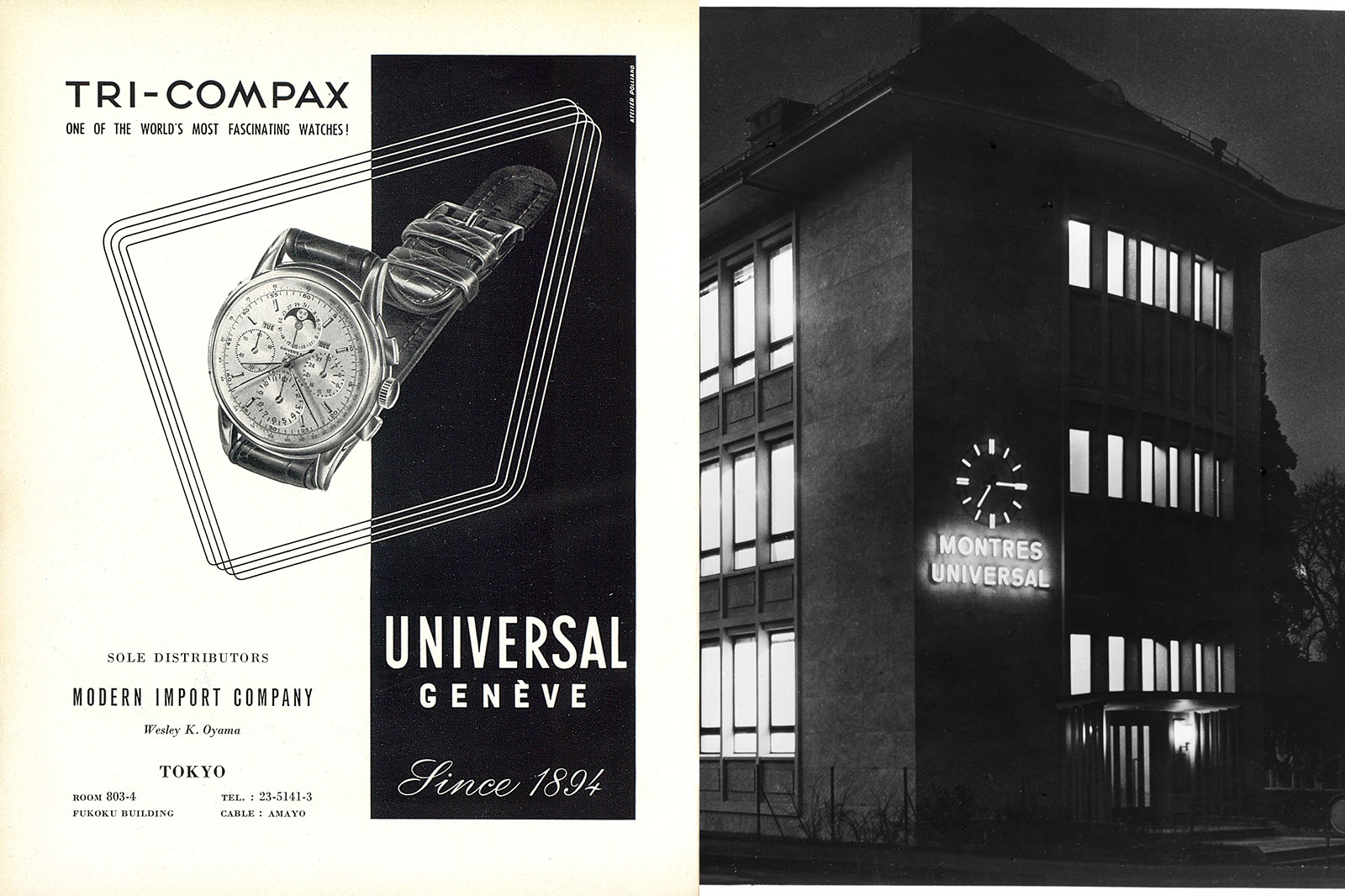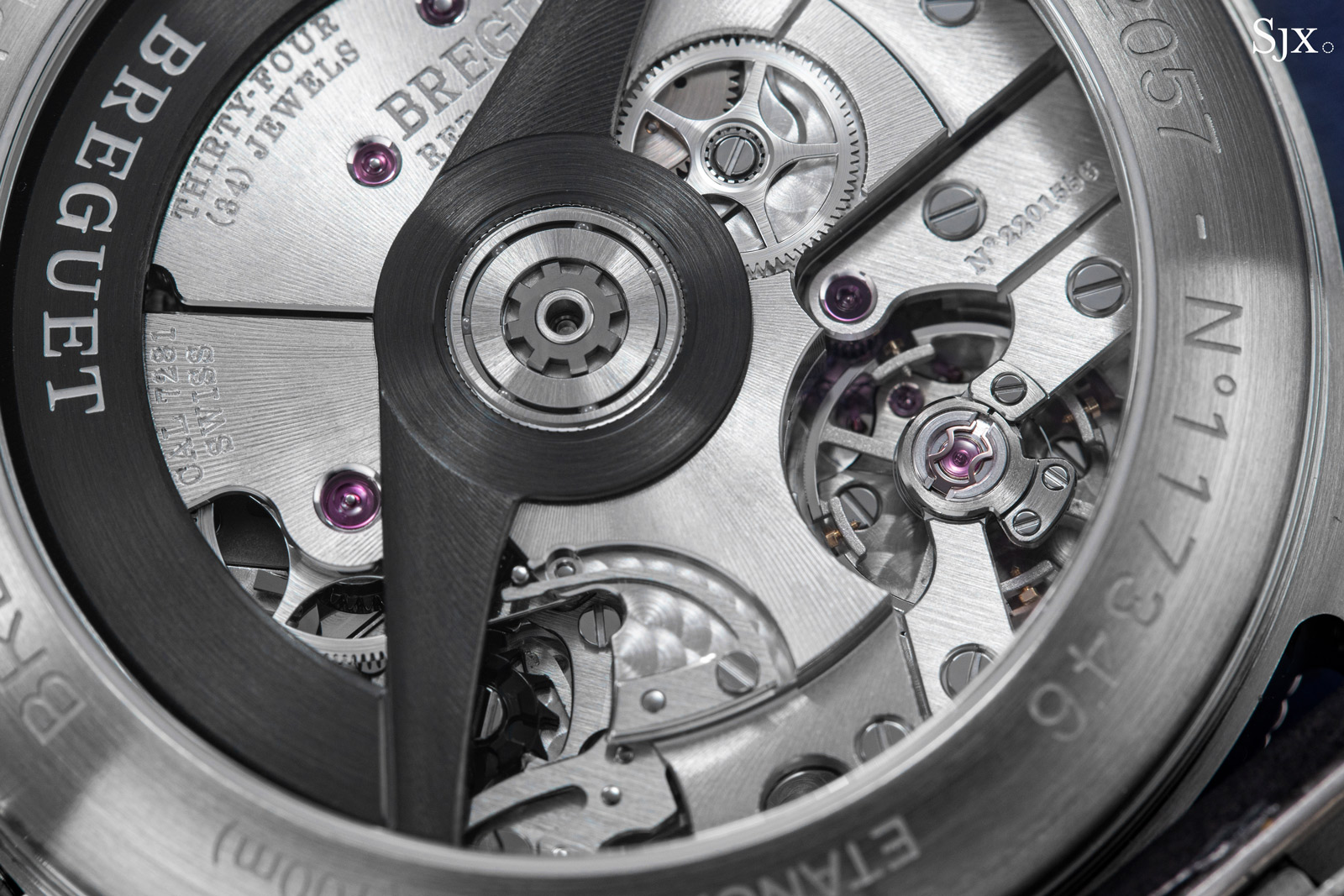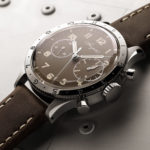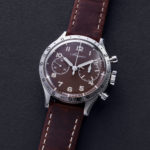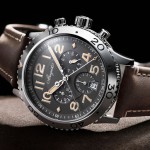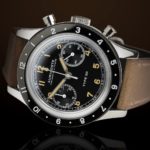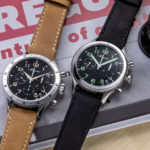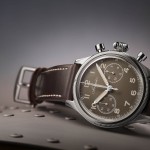With roots in 1950s French military-issue chronographs, the modern-day Type XX Chronographe was originally released in the mid-1990s and is now’s trademark pilot’s chronograph – and also the brand’s entry-level complication.
Originally utilising Lemania-based movement in prior generations, the Type XX was entirely revamped, inside and out, with the unveiling of the Type XX Chronograph 2057 and 2067 earlier this year.
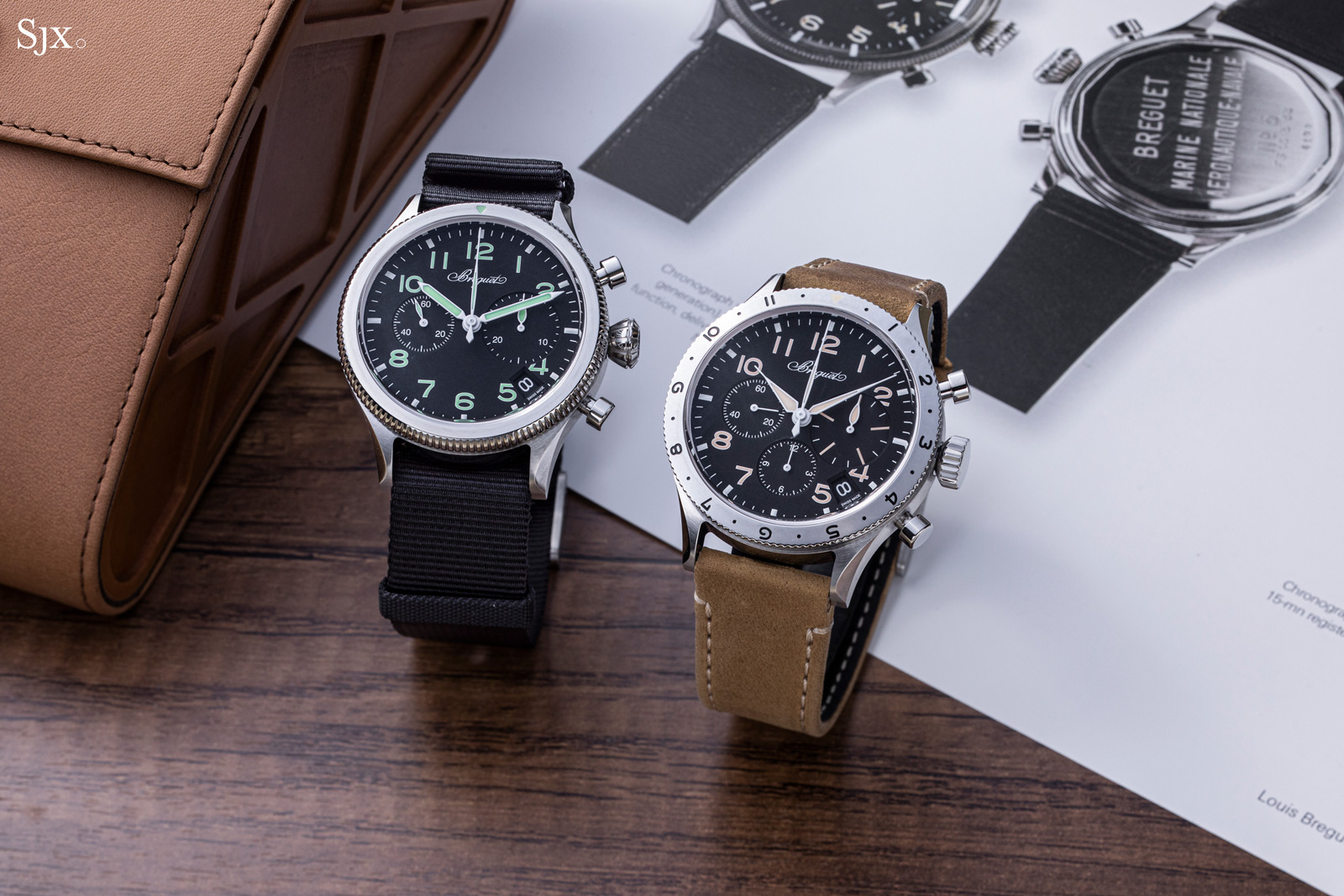
While the aesthetics have been revised, the most notable upgrade in the new-generation Type XX is a brand-new movement, the cal. 728. The cal. 728 is a high-frequency movement running at 36,000 beats per hour that employs a novel patent-pending flying mechanism as well as an inventive reset system.
The release of a completely new, in-house chronograph movement is uncommon, especially one with novel innovations that went under the radar. In fact, the cal. 728 is arguably one of the most sophisticated and advanced modern-day chronograph movements, putting it alongside the Audemars Piguet cal. 4401/4409 and Rolex cal. 4131. As a result, the cal. 728 deserves a closer look.
Controlled return
The cal. 728 is actually two related movements: the cal. 728 is an automatic, flyback-chronograph movement with three registers for elapsed seconds, minutes, and hours that is inside the three-counter Type XX ref. 2067, while the cal. 7281 is a two-counter version of the calibre found in the military-inspired Type XX ref. 2057.
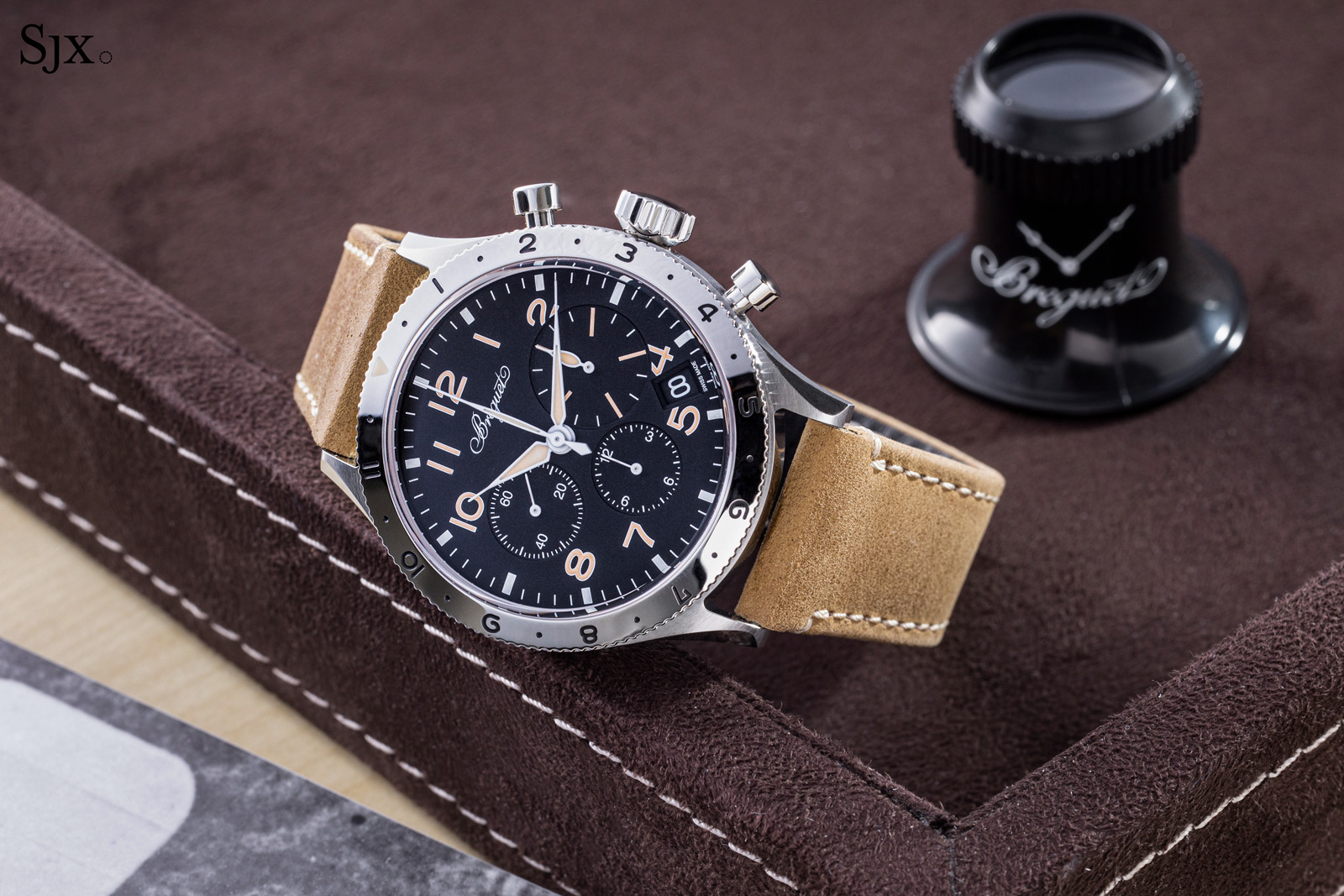
The most novel component of the cal. 728 is the patent-pending flyback system. The motivation of this novel mechanism is to ensure a consistent force in resetting the chronograph, regardless of any variation in force of actuating the reset pusher.
While conventional chronographs require the system to be stopped before the counters can be reset, a flyback chronograph allows resetting of the running counters, achieved by momentarily stopping the chronograph as the reset pusher is depressed. Upon release of the pusher, the chronograph will resume running, with all counters already reverted to zero. In short, the chronograph is paused, reset, and resumes.
In a typical flyback chronograph, pushing the reset pusher directly transmits force to a reset hammer, which in turn strikes the heart-shaped reset cams of the respective chronograph counters. The heart cams’ geometry causes them to rotate when pressed against a hammer, thus resetting the counters back to zero.
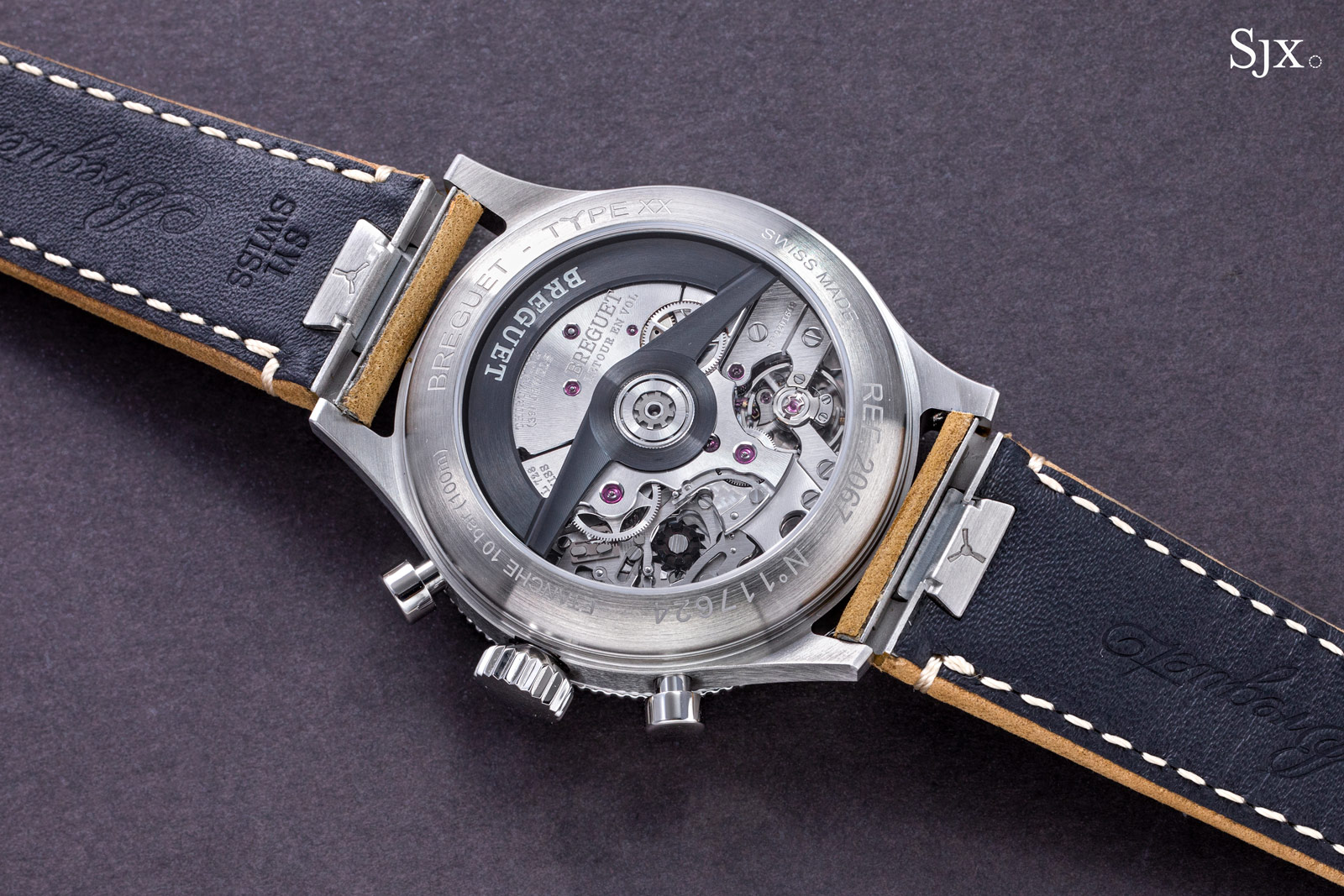
The cal. 728 however, relies on an arming spring that acts as a buffer, storing energy from the initial push of the reset pusher. This spring then releases only after the reset pusher is depressed, thus providing a controlled and consistent strike against the reset hammers.
This buffer system has the advantage of ensuring the flyback system works consistently when activated, as the reset hammers only activate when the reset pusher is pressed sufficiently to engage the mechanism. In comparison a typical flyback, in theory, may not fully reset all counters consistently if the pusher is not completely depressed.
An analogy can be drawn with the “all-or-nothing” mechanisms found in minute repeaters that require the repeater slide to be fully activated, with the slide in its furthest position, before the chiming mechanism activates.
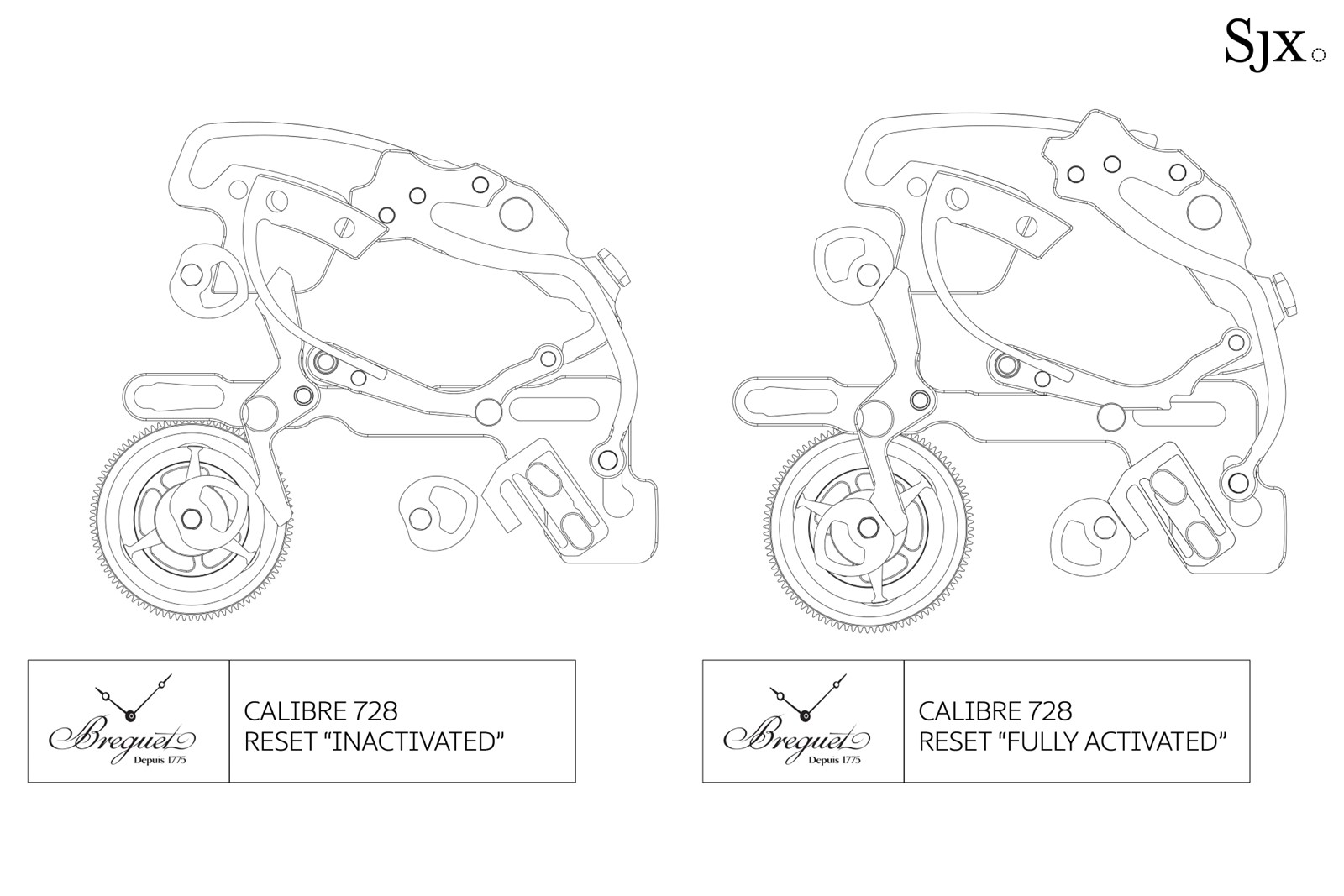
The flyback mechanism of the cal. 728. Diagrams – Breguet
Reset walkthrough
The key element of the cal. 728 is the long, relatively stiff buffer spring connected to the reset pusher lever as seen below. The reset pusher lever has an angled tip that contacts an intermediate lever, while the tip of the buffer spring presses against a slot in the reset hammer.
The intermediate lever is the key innovation of the reset system. It ensures that the reset hammer is securely locked when disengaged, and stays that way only until intentionally sufficient force is applied on the reset pusher.
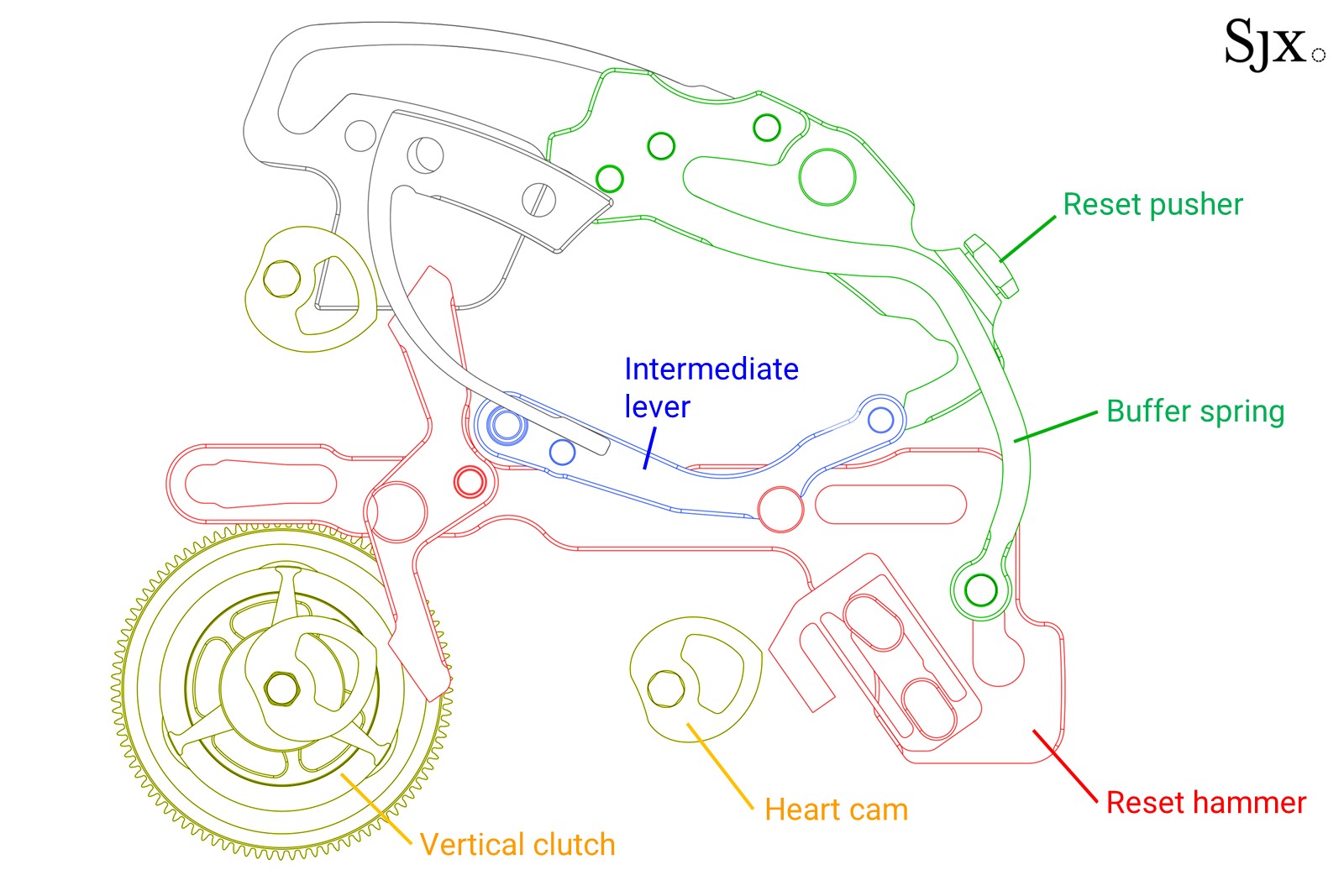
When the reset pusher is depressed, a sequence of events occurs. First, energy is stored in the buffer spring as it bends slightly, thus tensioning it against the reset hammer. However, the reset hammer is locked in place by a pin, which is held down by an intermediate lever that acts as a latch.
When the reset pusher is pressed in sufficiently far enough, two things occur. First, more energy is stored in the buffer spring – enough for the reset system to work reliably in the subsequent steps. Second, the angled tip of the reset lever now traverses in far enough, lifting the intermediate lever out of the way of the reset hammer pin.
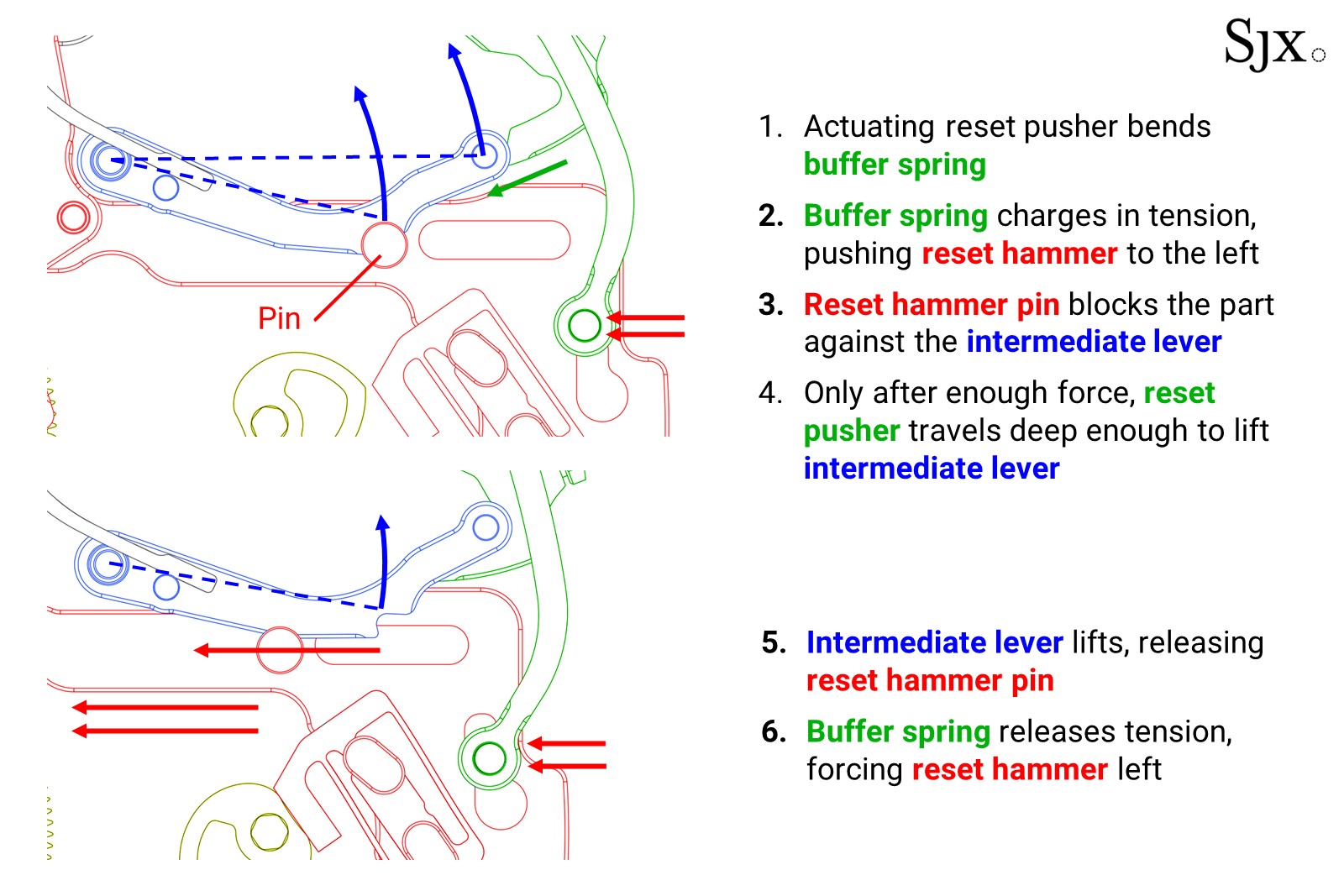
The moment the reset hammer pin is released, all the stored energy in the buffer spring releases, forcing the reset hammer to the left. In turn, the reset hammer strikes the respective heart cams of the seconds and minute counters (and the hour counter in the case of the cal. 7281), resetting each counter to zero.
This locking system ensures the chronograph resets consistently regardless of the elapsed time measurement of the counters. In the worst-case scenario, each of the heart cams has its tip directly facing the reset hammers, each having to rotate 180° to reset; this occurs when the hand on each counter has travelling almost a full revolution, and requires the most force to rotate the heart cams back to zero. The locking system is tuned such that the latch releases only after sufficient force is stored in the buffer spring, ensuring the reset hammers engage the heart cams with sufficient force to completely zero the counters.
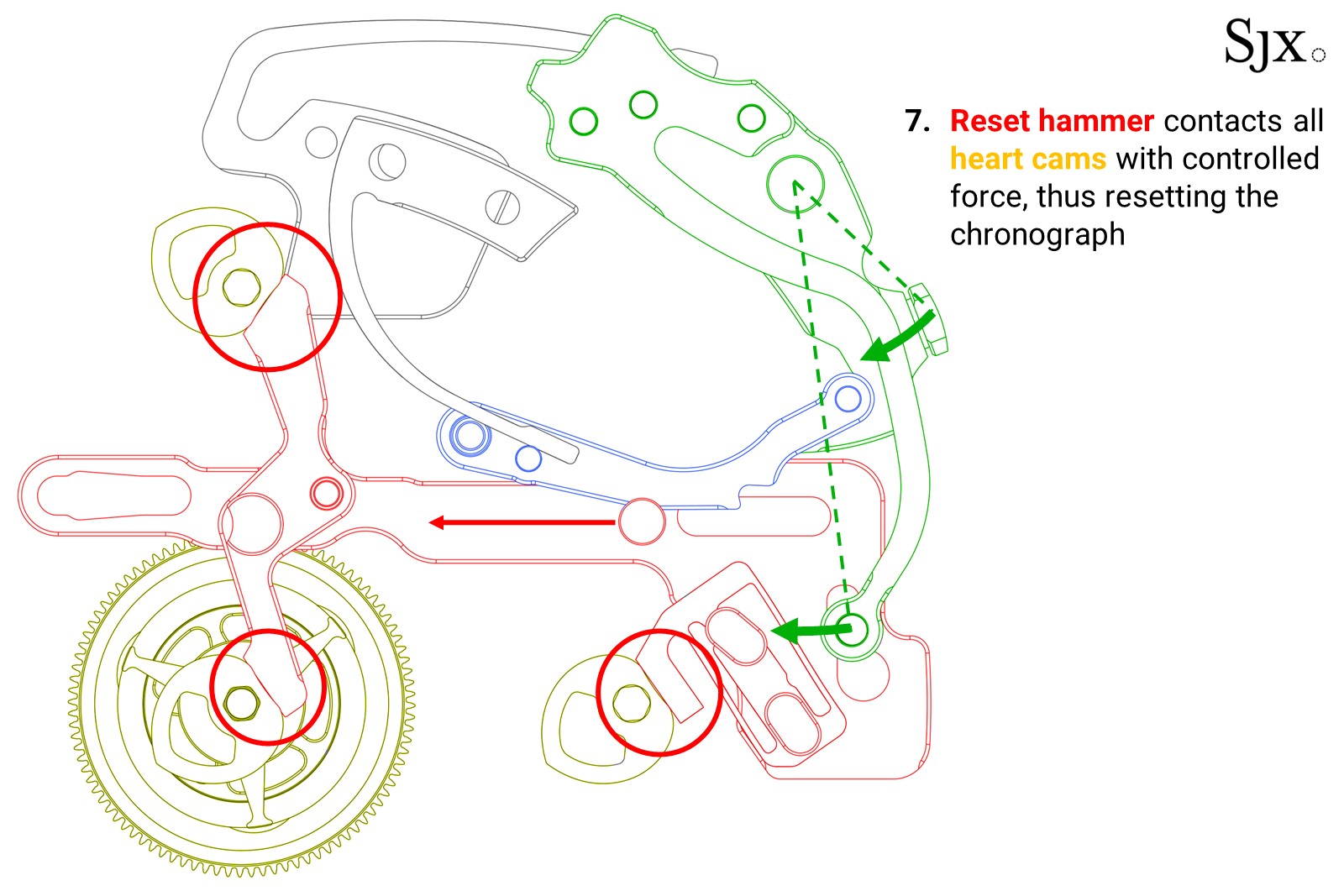
Upon release of the reset pusher, a detent spring returns the reset lever spring to its initial position. This simultaneously pulls the reset hammer back to its original position, while also drawing the tip of the reset hammer far back enough to allow the intermediate lever to fall back down, locking the reset hammer. The chronograph is now reverted to its running state, ready for another flyback reset.
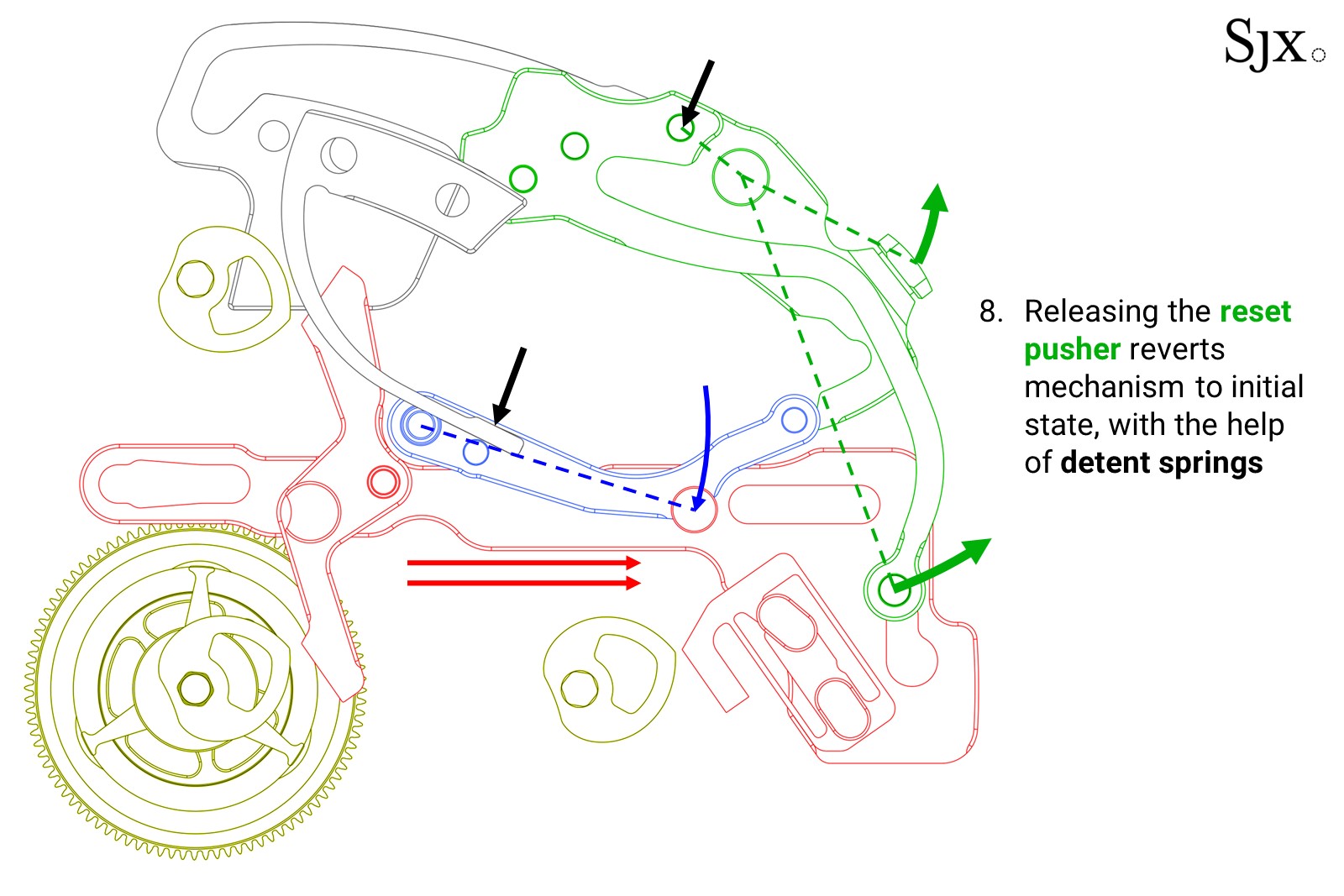
The construction of the mechanism results in a pusher feel that is atypical of a flyback chronograph, which usually exhibit continuous gradual resistance as the reset pusher is depressed. In the cal. 728, the reset pusher has initial resistance as a result of arming the buffer spring, before going the rest of the way with little resistance, a tactile bump to overcome corresponding to the release of the latch.
Reset adjustment
The astute will notice that the reset hammers are a single assembly that has to reset up to three heart cams simultaneously, one each for the seconds, minutes, and hours. A crucial element is ensuring the reset hammers contact the heart cams evenly, as one misaligned hammer may result in the other hammers not fully engaging their respective heart cams.
To address this, the cals. 728 and 7281 employ a “floating” hammer for the seconds and hour counters. This consists of a pivoting rocking hammer, allowing for wider tolerances between the reset hammers against the hours and seconds heart cams.
However, this does not address the additional third hammer for the minutes counter. This hammer utilises a flexible steel element – akin to a compliant mechanism – that results in minor play between the components during reset. In order for precise adjustment during movement assembly, the minutes reset hammer is mounted via two friction-fit pegs to the reset lever.
Collectively, these constitutes a reset assembly that evenly engages all three heart cams. And paired with the constant force stored in the reset buffer spring, the set-up enables a reliable flyback reset mechanism.
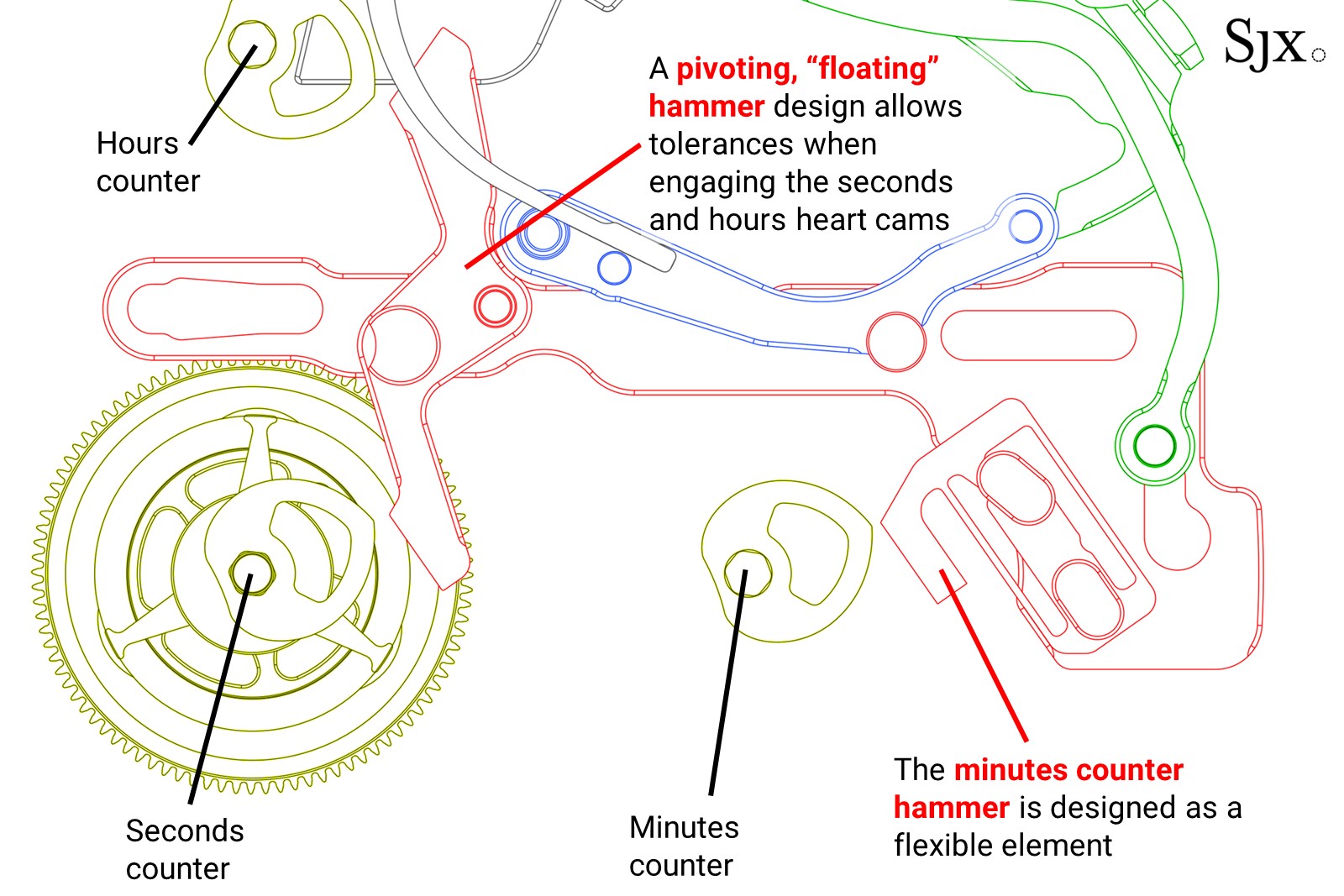
The clutch design
Indirectly related to the flyback system is the clutch design of the cal. 728. As with most modern chronograph movements, it employs a vertical clutch is instead of a lateral clutch.
There are numerous reasons why this is a sensible choice. The immediate consideration is space: the vertical clutch occupies less horizontal volume, allowing for room for the elaborate flyback mechanism. Additionally, because the cal. 728 is self winding, space is needed for the automatic winding mechanism and rotor.
The second reason is more conventional – a vertical clutch has the benefit of avoiding skipped gears when the chronograph is activated, preventing a “stuttering” seconds hand, which sometimes happens with a lateral clutch. This is more noticeable when a lateral clutch is paired with a high-frequency movement, like the cal. 728 that runs at 5 Hz, or 36,000 beats per hour.
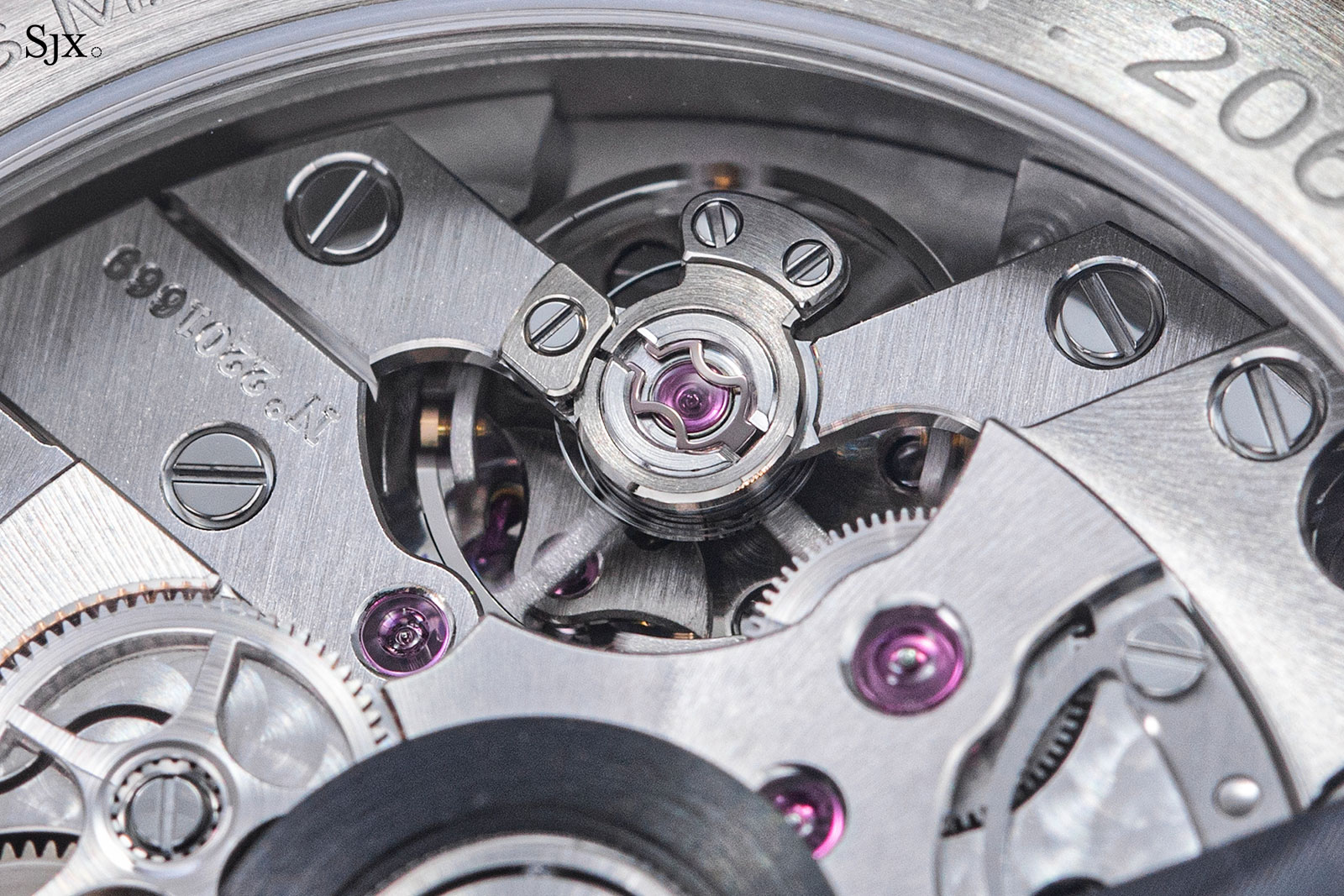
While not shown in the diagrams above, the vertical clutch has two clamps that press inward against the clutch when the chronograph is disengaged, raising the clutch and preventing it from engaging. When the chronograph is started, the jaws are released and swing outwards, releasing the clutch, letting it move downwards to engage with the geartrain, which starts the chronograph.
In a flyback chronograph, the chronograph has to be momentarily stopped before the reset hammers contact the heart cam, otherwise the chronograph mechanism will jam. Thus, when the reset hammers begin moving to the left to reset the system, they trigger a mechanical connection that temporarily closes the clamps to disengage the clutch, stopping the chronograph momentarily. Only then does the reset hammer contact the heart cams, resetting the chronograph.
Another consideration of the cal. 728 is the position of the clutch in the gear train. The cal. 728 has the vertical clutch right in the centre of the movement, directly driving the chronograph seconds. Paired with the vertical clutch, the benefit is a smoothly driven chronograph seconds, without any unsteady motion that might occur if an indirect seconds train was employed.
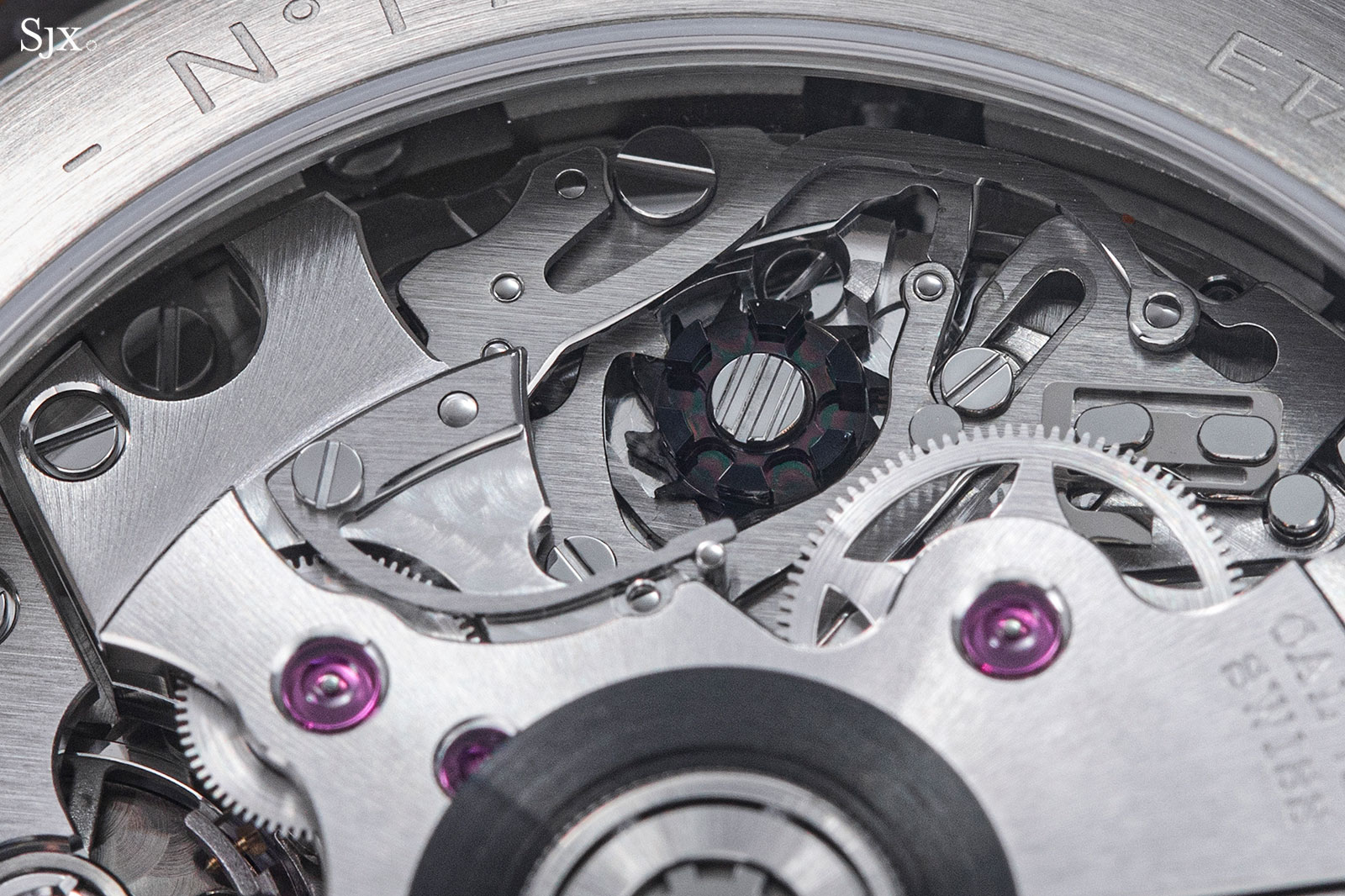
Conversely, this means that the subsidiary seconds at nine o’clock is indirect, requiring an auxiliary gear train connecting to the centrally-positioned vertical clutch to drive the subsidiary seconds. Mechanically, this is a useful trade off to ensure a smoother operation of the important chronograph seconds hand.
On the same note, the relatively advanced construction of the cal. 728 results in a design shortcoming on the dial. The dials of both Type XX lack the seconds scales that correspond to the high-frequency, 5 Hz movement, which allows for measurements of up to a tenth of a second. Refining the seconds track around the dial to feature tenth-of-a-second hashmarks is an easy fix for this.
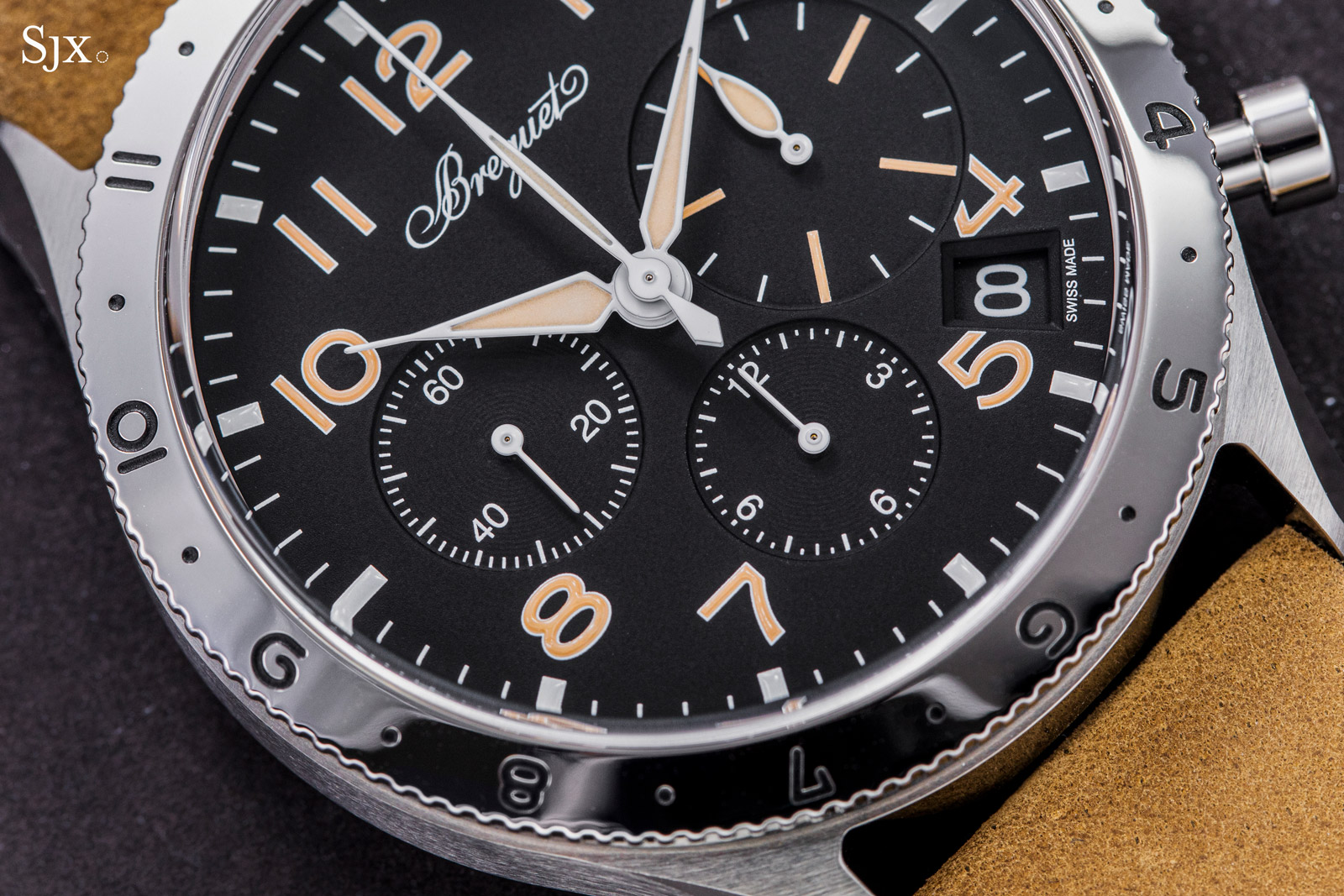
Concluding thoughts
In summary, the cal. 728 of the new Type XX is an impressive effort in improving and enhancing the construction of the modern chronograph, in particularly with the novel and reliable flyback system.
Given the expense required to develop an entirely new chronograph movement, it is almost certain that the cal. 728 or some derivatives will appear in upcoming models. It will be interesting to see what Breguet does with the movement, perhaps installing it in a Marine or even giving it a more classical form and putting it inside a Classique.
Back to top.